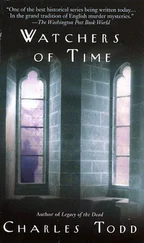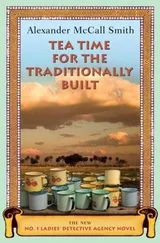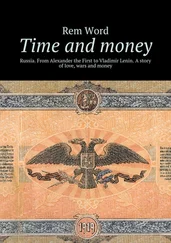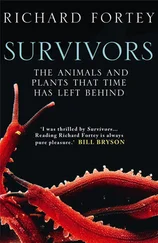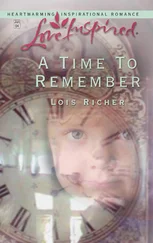Alexander Todd - A Time to Remember
Здесь есть возможность читать онлайн «Alexander Todd - A Time to Remember» весь текст электронной книги совершенно бесплатно (целиком полную версию без сокращений). В некоторых случаях можно слушать аудио, скачать через торрент в формате fb2 и присутствует краткое содержание. Город: Cambridge, Год выпуска: 1983, ISBN: 1983, Издательство: Cambridge University Press, Жанр: Химия, Биографии и Мемуары, на английском языке. Описание произведения, (предисловие) а так же отзывы посетителей доступны на портале библиотеки ЛибКат.
- Название:A Time to Remember
- Автор:
- Издательство:Cambridge University Press
- Жанр:
- Год:1983
- Город:Cambridge
- ISBN:0 521 25593 7
- Рейтинг книги:3 / 5. Голосов: 1
-
Избранное:Добавить в избранное
- Отзывы:
-
Ваша оценка:
- 60
- 1
- 2
- 3
- 4
- 5
A Time to Remember: краткое содержание, описание и аннотация
Предлагаем к чтению аннотацию, описание, краткое содержание или предисловие (зависит от того, что написал сам автор книги «A Time to Remember»). Если вы не нашли необходимую информацию о книге — напишите в комментариях, мы постараемся отыскать её.
A Time to Remember — читать онлайн бесплатно полную книгу (весь текст) целиком
Ниже представлен текст книги, разбитый по страницам. Система сохранения места последней прочитанной страницы, позволяет с удобством читать онлайн бесплатно книгу «A Time to Remember», без необходимости каждый раз заново искать на чём Вы остановились. Поставьте закладку, и сможете в любой момент перейти на страницу, на которой закончили чтение.
Интервал:
Закладка:
When I went to Oxford people in my position, i.e. graduates from other universities coming to do advanced work, often found great difficulty in fitting fully into college life, and not a few of those who were my contemporaries never really became part of the colleges which they joined. In Oriel I was much more fortunate, became thoroughly integrated and, indeed, came to be regarded as an 'Oriel man' just as much as those who had come up as undergraduates. This made a great difference to my social life in Oxford and, since, after taking the D.Phil. in 1933, I was made a member of the Oriel Senior Common Room I really saw a lot of college life both of the student and the don. It is perhaps only fair to say that my ready integration into Oriel really rested on sporting ability. When a newcomer came to the college the various clubs used to descend upon him to see if he had any qualities that would be useful to them. Now, it happened that I had played quite a lot of lawn tennis since my schooldays, and, although no champion, I was competent enough to have played tournament and representative tennis. I confessed to the Oriel captain that I had played a little tennis and was promptly asked to go out to the sports ground where the college experts would give me a trial. As it happened, I thrashed the college experts and was immediately accepted as a worthwhile member, a position made secure by my election to the University Lawn Tennis Club in my first term. But whatever the reason, I had three very happy years in Oriel.
Robert Robinson had come to Oxford just a year before I joined him, but already the Dyson Perrins Laboratory was a hive of activity. He had brought with him a group of research men of various nationalities, some pre- and some postdoctoral, and there was an air of excitement in the laboratories. Robinson himself was at the height of his powers and bubbled over with ideas. I had never met him until I went to join him in September 1931 and I still recall with amusement our first encounter in his office. He was seated at his desk writing, and when I came in he looked up and said ' So you've come to do research?' whereupon I replied simply 'Yes.' 'Well,' he said, 'you know I am interested in anthocyanins and for our synthetic studies we need various omega-hydroxyacetophenone derivatives; now I would like you to make some veratroyl chloride and see if you can convert it with diazomethane to a diazoketone and thence to the hydroxyketone.' He then picked up his pen, evidently finished with me. As I was still standing there he looked up and, seeing my rather puzzled expression, said 'What's the trouble?' 'That doesn't sound much of a problem,' I said, 'what about the research I have to do?' He spluttered a bit. 'What? Who are you?' 'My name is Todd.' 'Good God,' he said, 'I thought you were a Part II undergraduate!' He then started to chat about work and took me off to instal me in a small laboratory for two people adjacent to his own, where, incidentally, he also installed my Frankfurt friend Bertie Blount who was to work in the alkaloid field.
Blount and I occupied that laboratory for the next three years and, probably because of its proximity to his office and laboratory, we saw a lot of Robinson - much more than did most of his collaborators elsewhere in the building. We used to brew tea at about four in the afternoon and on most days Robinson would drop in and join us for a concerted attack on the Times crossword puzzle and a gossip about current chemical interests. It was during one of these 'tea and puzzle' sessions that I made the real breakthrough that opened the way to the synthesis of all the major diglucosidic anthocyanins. When I got to Oxford, one of the main stumbling blocks in efforts to synthesise such flower pigments as, for example, cyanin, pelargonin and malvin, was the total failure that had attended all efforts to make the 2-glucoside of phloroglucinaldehyde. Robinson was thinking up some very roundabout procedures to get out of this difficulty, but it seemed to me that since one could put a benzoyl group directly into the 2-position of phloroglucinaldehyde one ought to be able to put in a glucose residue. So I started in to condense acetobromoglucose with unprotected phloroglucinaldehyde; I tried all sorts of tricks, but I could get nothing but intractable syrups and gums. One day, however, I had a methanolic solution of one such gum in a small conical flask and was concentrating it by dipping it from time to time into a hot water-bath while at the same time having tea and doing the crossword puzzle with Robinson and Blount. The inevitable happened; I dipped the flask in for a little too long so that the solution boiled violently and, probably because it was rather hot, the flask slipped from my fingers and fell into the water-bath. I fished it out and put it over among the dirty glassware which I intended to clean up the following morning; to my astonishment when I came to do this the next day I noticed that the walls of my small flask were covered with crystals. They were indeed crystals of 2-beta-tetra-acetyl-D-glucopyranosyl-phloroglucinaldehyde! Henceforth, with seeding material available, there were no further problems and the way to the anthocyanins was wide open. I don't know what moral, if any, to draw from that story, but at least it explains why, in a later edition of a well-known chemical textbook, it is recorded that the 2-glucoside of phloroglucinaldehyde is best crystallised by diluting its concentrated methanolic solution with a large volume of hot water!
Compared to the Frankfurt Chemical Institute the Dyson Perrins Laboratory in Oxford was rather primitive when I joined it in 1931. No micro-analysis facilities were available, and analyses were carried out down in the semi-basement by the laboratory steward, Fred Hall, using the classical macro-procedures. Fred had been Perkin's chief assistant and in my time ruled the Dyson Perrins - and its professor - with a rod of iron; many stories are told about him but I always got on well with him and found him very helpful. [I did hear, years later, that he told someone that the only two real gentlemen who ever worked in the Dyson Perrins were Alex Todd and Donald Somerville (who later went into the law and politics and became Attorney General).] Blount and I used to send our materials to Schoeller in Berlin for micro-analysis and it was not until 1933 when Drs Weiler and Strauss came as refugees from Nazi Germany that routine micro-analysis was developed in the Dyson Perrins. Blount and I also introduced catalytic hydrogenation and ground glass joints to Oxford but, during my time, the other equipment available amounted to a very indifferent polarimeter, a visible absorption spectrometer and an American pressure hydrogenator which didn't work. Robinson was like his teacher and predecessor Perkin in having little interest in gadgets - he was firmly attached to the degradative and synthetic methods of classical organic chemistry and was slow to adopt such things as ultra-violet and, later, infra-red spectroscopy as aids in structural work.
In those days Robinson was at the height of his powers and he was the most inspiring director of research with whom I have ever come in contact. Certainly one had to be reasonably tough and independent to appreciate him fully, and many a budding chemist who came to Oxford from another school where 'spoon-feeding' of Ph.D. students was the rule, found it difficult to settle into the rather haphazard Oxford scheme of things. Robinson had a razor-sharp mind, but he was interested in many topics and his interest would flit from one to the other with great frequency. He was liable to concentrate all his attention on the topic interesting him at any given moment, to the exclusion of everything else. This made many people regard him as frequently tactiturn if not downright rude, and his collaborators had to get accustomed to being alternately badgered about their progress several times a day, and being almost totally ignored for weeks on end. Perhaps because of the proximity of my laboratory to his, I only observed but did not suffer much from his behaviour. Robinson did not pursue solid experimental work, and differed in this way from his predecessor Perkin. Generally he confined himself to a few preliminary experiments, usually in glass boiling-tubes, and left the follow-up to a junior collaborator. He was very emotional in his reaction to events and impatient with those holding views contrary to his own. This perhaps helps to explain the enormous range of his contributions and the reason for his name being associated with the discovery of a prodigious number of reactions used in synthesis, but with relatively few completed syntheses of complex molecules like steroids. His instinct when confronted with a difficulty in experimental work was at once to seek an alternative route to his objective, or even to change the objective itself; this practice led frequently to the discovery of new reactions, but also, at times, to the premature abandonment of synthetic routes which were later shown by others to be practical.
Читать дальшеИнтервал:
Закладка:
Похожие книги на «A Time to Remember»
Представляем Вашему вниманию похожие книги на «A Time to Remember» списком для выбора. Мы отобрали схожую по названию и смыслу литературу в надежде предоставить читателям больше вариантов отыскать новые, интересные, ещё непрочитанные произведения.
Обсуждение, отзывы о книге «A Time to Remember» и просто собственные мнения читателей. Оставьте ваши комментарии, напишите, что Вы думаете о произведении, его смысле или главных героях. Укажите что конкретно понравилось, а что нет, и почему Вы так считаете.

